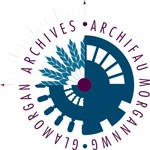On 28 February 1901 the Barry Hotel was “under the hammer” at an auction held at Cardiff.

As a hotel of some status, the sale was conducted by Stephenson and Alexander, Auctioneers and Surveyors, of Cardiff. The company records, held at Glamorgan Archives, provide an insight into the luxury and service that lay behind the imposing doors of the hotel over a hundred and twenty years ago in 1901.
When opened in 1890 the new hotel planned to capitalise on the anticipated boom in trade that would follow from the completion of Barry docks. The prospectus for the Barry Hotel estimated that with up to 50 ships in the port at any one time there was ample scope for a new and upmarket hotel. The target audience was both businessmen and tourists with the growing vogue for seaside summer vacations. Situated in Barry on the corner of Broad Street and Windsor Road, adjacent to the railway station and within walking distance of the docks, the hotel looked to be perfectly situated.
What could the visitor expect in 1900 as they were delivered at the front door by the hotel’s own omnibus? Walking under the large gilt letters over the doorway, announcing the Barry Hotel, the first impression was of opulence and sophistication. The vestibule and entrance hall were lit with gas globes and bedecked with flowers set on ornate pedestals, alongside walnut tables with a display of Japanese vases and plates. To complete the scene, a series of oil paintings lined the walls in the hall and continued up the staircase to the upper floors.
After registering and stowing your valuables in the hotel’s formidable steel safe, made by Perry and Co of Bilston (a company famous for its armour plate used in the construction of battleships), guests were whisked upstairs to one of the hotel’s 57 rooms. The most luxurious were to be found on the first floor, with ash or walnut dressing tables and washstands topped with St Anne marble imported from Belgium. The brass bedstead was offset with a white embroidered French style “Marcella” counterpane, while the floor was covered with a Brussels carpet.
But why linger in the room when, on the same floor, guests had access to a club room, a coffee room and two private drawing rooms? The drawing rooms offered a range of easy chairs covered in either Moroccan leather or “figured” green velvet, writing tables and even a piano – again the best – provided by Stiles and Co of London. Venturing to the ground floor the guest had access to a billiard room with two tables made by Burroughes and Watts, and an employee ready to “chalk” your score.

After a long day there was the option of refreshment in the hotel’s First Class bar, with its walnut settees and picture of The House of Commons, before heading to the a la carte restaurant with table settings embellished with the hotel’s Elkington silver plate. The extensive menu included a range of produce drawn each day from the large gardens to the rear of the hotel. No doubt the meal provided an opportunity to plan for the next day, and one option lay in hiring a horse-drawn carriage or trap from the hotel’s stable for a country tour and a picnic.
However, by modern standards a stay at the Barry Hotel was not what might be expected of a premier hotel. The rooms were heated by coal fires and each guest was provided with a hot water bottle. Plumbing and bathrooms were basic with just two bathrooms and two toilets serving the entire first floor. Also, visitors to the public bars would have found spittoons dotted across the floor and liberally used by those who habitually chewed tobacco. Nevertheless, a guest in 1900 could not fail to have been impressed by the comfort and service provided at the Barry Hotel.
The hotel was the project of TA Walker. Thomas Walker had made his reputation and fortune as a “contractor” managing some of the greatest engineering projects of the era. He was perhaps best known for his work on the construction of the Severn Tunnel, Barry Docks, Swansea Docks, Llanishen reservoir and the Metropolitan and District lines in London. He also worked on projects across the globe, including Russia, the Sudan, Canada and Buenos Aires. At the time of his death in November 1899, he was heavily involved in directing work on the Manchester Ship Canal. Sadly Walker, who was described in the newspapers as “…the hero of the Severn Tunnel and the contractor of colossal engineering works”, did not live to see the opening of the Barry Hotel.
The building is still standing today, although no longer a hotel. For those who want to find out more about its illustrious past a list of the records held in the Stephenson & Alexander collection can be found online, under reference DSA, in the catalogue of Glamorgan Archives at http://calmview.cardiff.gov.uk/.
In the next article we move on to another property handled by Stephenson and Alexander –a theatre in Pontypridd. When first opened in April 1891 it was described as the premier and first permanent theatre in the town, with seats for over a thousand people. With acts including Annie Oakley, the American “sharpshooter”, alongside a regular diet of drama, musicals and burlesque, it was soon one of the most popular venues in South Wales. The sale particulars compiled by Stephenson & Alexander in 1900, provide a glimpse of just how this theatre looked at the turn of the century and include details of some of the acts that performed on its stage.
Tony Peters, Glamorgan Archives Volunteer
